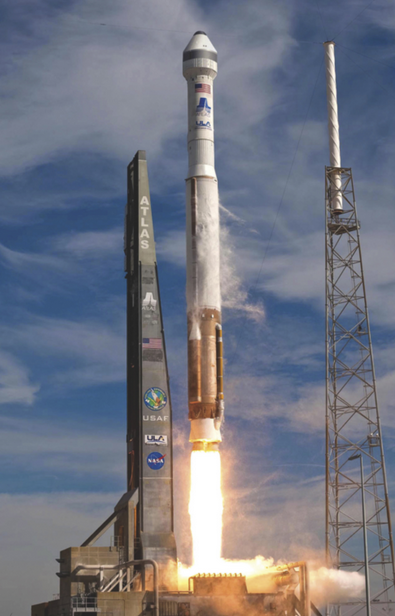Jason Davis • Apr 13, 2012
NASA collects round three of CCDev proposals
If you're familiar with NASA's Commercial Crew program, you've probably heard of COTS and CCDev. Get ready to welcome a new acronym to the private spaceflight party: CCiCap. However, pretty much the only thing that's new about the Commercial Crew Integrated Capability initiative is its name; you can just think of it as CCDev phase three.
In case you're lost, here's a refresher. COTS (Commercial Orbital Transportation Services) is NASA's commercial program for companies looking for send non-crewed cargo spacecraft to the International Space station. For example, Orbital Sciences' Antares Rocket and Cygnus supply spacecraft are COTS participants.
On the human side, CCDev (Commercial Crew Development) aims to put an end to the $55.8 million per-seat checks NASA writes to the Russian space agency Roscosmos when American astronauts ride Soyuz capsules to the International Space Station. Two rounds of CCDev funds have already been allocated. Current CCDev partners include SpaceX, Boeing, Sierra Nevada and Blue Origin.
Of the round two funding winners, only SpaceX has its own rocket system. They are perennially two months away from an historic Space Station docking test. Boeing continues to prepare its CST-100 capsule for launch atop a human-rated United Launch Alliance Atlas V rocket. Sierra Nevada's Dream Chaser mini-shuttle and Blue Origin's Crew Transportation System capsule also seem keen on using an Atlas V to boost their vehicles into space.

So what can we expect to see in CCiCap, also known as CCDev round three? Previously, CCDev funding was given to support small pieces of more grandiose projects, such as SpaceX's launch abort system and Blue Origin's life support design. The "i" in CCiCap stands for "integrated," and will change the approach: NASA officially seeks end-to-end, full-blown proposals for reliably shipping humans and cargo to the Space Station and bringing them home to Earth safely. Solutions must include all the trappings you'd expect from a Soyuz or space shuttle launch, including ground support facilities, launch pads, rockets, capsules and docking systems.
With industry proposals due March 23, it will be interesting to see who wins the funding. Since the competing companies are required to have feasible plans for non-crewed flights, launch abort demonstrations and drop tests as early as 2014 -- with crewed flights soon after -- the selections will shed some light on which of the four current front-runners are serious contenders.
There's a lot of money on the line. NASA's 2013 budget calls for $829.7 million to be allocated to commercial crew development, with the same amount requested in 2014. The space agency's official press release says award payouts will range from $300 to $500 million. Even considering that the program will cover more than one year, it is conceivable not every current partner will make the cut. The remaining winners will then, as commercial crew program manager Brent Jett put it, "do the heavy lifting."
Presumably, no pun was intended; currently, a Russian Progress resupply vessel can lift more than two tons of supplies to the International Space Station.
Support our core enterprises
Your support powers our mission to explore worlds, find life, and defend Earth. You make all the difference when you make a gift. Give today!
Donate

 Explore Worlds
Explore Worlds Find Life
Find Life Defend Earth
Defend Earth

